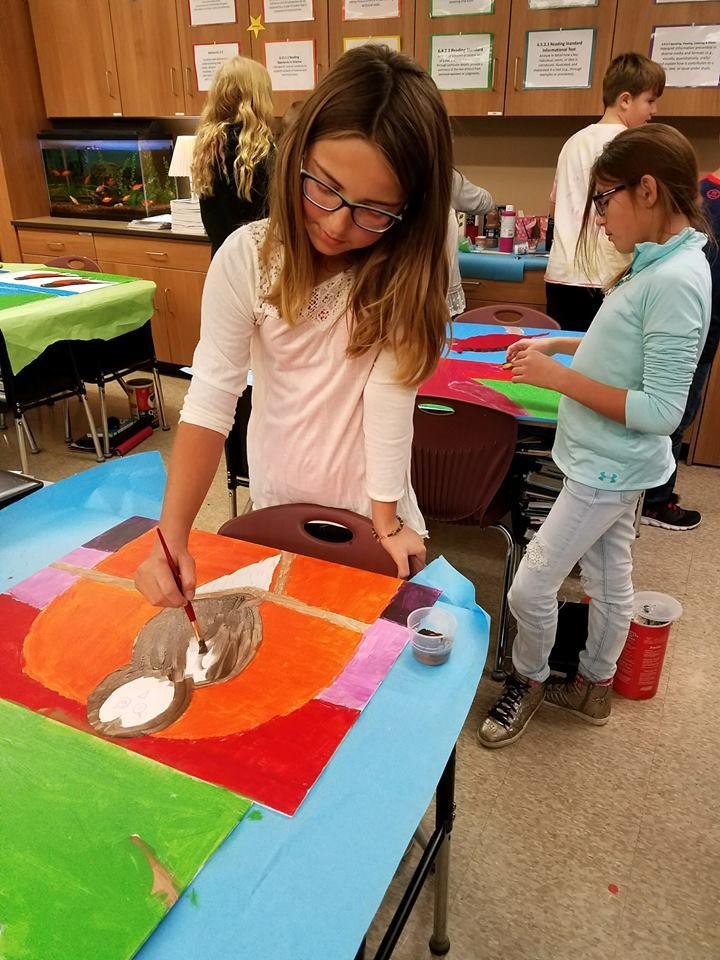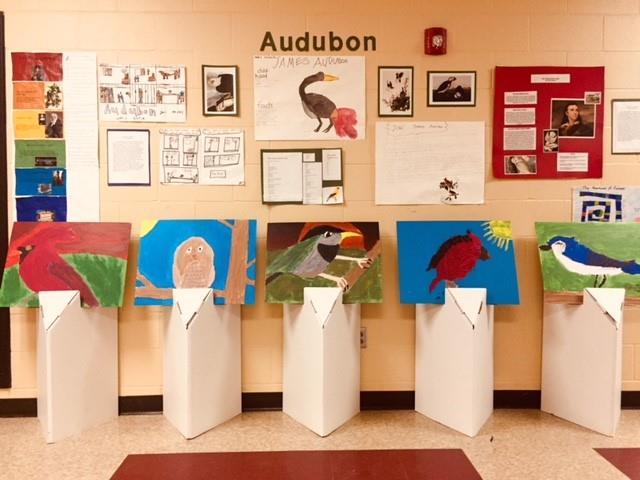Rural Schools Collaborative believes that thoughtful place-based education helps rural students foster a sense of connection and fellowship within their communities. Our partners at West Central Initiative in western Minnesota share this view, and together with WCI, Rural Schools Collaborative awarded five rural school teachers in the state with funding for their own place-based curriculum and projects.
 At Lake Park Audubon Elementary School, Kathrina O'Connell is leading a project teaching students about the conservation efforts of John James Audubon and his influence on Audubon, Minnesota, their hometown.
At Lake Park Audubon Elementary School, Kathrina O'Connell is leading a project teaching students about the conservation efforts of John James Audubon and his influence on Audubon, Minnesota, their hometown.
"It is important for the students to learn about their community, John James Audubon, and the wildlife surrounding us," stated O'Connell.
Students have collaboratively researched the life of Audubon, as well as the beginnings of their town. Students also learned about birds in their community by making observations and using bird baths/feeders in their school's wildflower garden during different seasons.
To research Audubon's life, students used reading activities that encouraged them to compare articles and information about the life of John James Audubon, according to Ms. O'Connell. When the articles had been read, analyzed, and compared, the students then selected the method in which they would demonstrate mastery of that information. Some students wrote essays, others created wall displays; one student created a multiple-choice test, and many created trivia board games.
O'Connell's classes recently finished one of the final elements of their project: they took photos of birds in the community and then painted the birds just as Audubon had years before. Students took a field trip to a restored Minnesota prairie, located 1.5 miles north of the school. They worked with Audubon Dakota and experts from the US Fish & Wildlife Service to observe birds in their natural habitat, "just as Audubon himself would have done," stated O'Connell. The students returned to school and set out bird feeders in the wildflower garden, and have been tending to them as the weather gets cooler and food becomes more scarce for the birds.
Lastly, students learned about Audubon’s paintings; after their field trip, they each choose a bird to paint, with the caveat that it had to be a species found in the prairies of Audubon, Minnesota! The students studied the bird's characteristics and carefully painted them on large canvases which they displayed in their school.
A project like O'Connell's is a perfect example of how engaging students in place-based education can foster a greater connection to their home. As O'Connell stated in her grant report, "This place-based, rural school grant, has provided the sixth graders with the opportunity to study the history of their town and school, as well as the conservation efforts of...Audubon. Not only are they cognizant of the town’s history and street names, but they are also more appreciative of nature and wildlife that surrounds this special, little town."
 Thanks to WCI and their matched funding for Grants in Place throughout western Minnesota! Additional thanks to Wendy Merrick, WCI Program Director, for visiting Ms. O'Connell's classroom and capturing these photographs of students in action!
Thanks to WCI and their matched funding for Grants in Place throughout western Minnesota! Additional thanks to Wendy Merrick, WCI Program Director, for visiting Ms. O'Connell's classroom and capturing these photographs of students in action!
Read Ms. O'Connell's report on the project here!
The 2017 Grants in Place program included more than twenty funders and individual donors who came together to invest $135,000 in rural place-based student-centered projects. Funding was provided for 35 projects serving 45 communities in 11 different states.

